
When it comes to maintaining your septic system, knowing exactly where everything is located can save you time, money, and a whole lot of digging. That’s where septic tank markers come in. These handy markers help identify the access points, cleanouts, and underground components of your septic system—ensuring they’re easy to find whenever maintenance, inspection, or repairs are needed.
If you’ve just had a septic system installed, the layout might still be fresh in your mind. But as time passes and landscaping takes over, those important spots can become harder to pinpoint. Many homeowners look for semi-permanent or decorative ways to mark their septic tank areas—not only for convenience but also to preserve the look of their yard.
In this post, we’ll explore a variety of creative and practical septic tank marker ideas. Whether you want something subtle, stylish, or purely functional, these options will help you stay organized while keeping your outdoor space beautiful.
1. Commercial Plastic Septic Marker
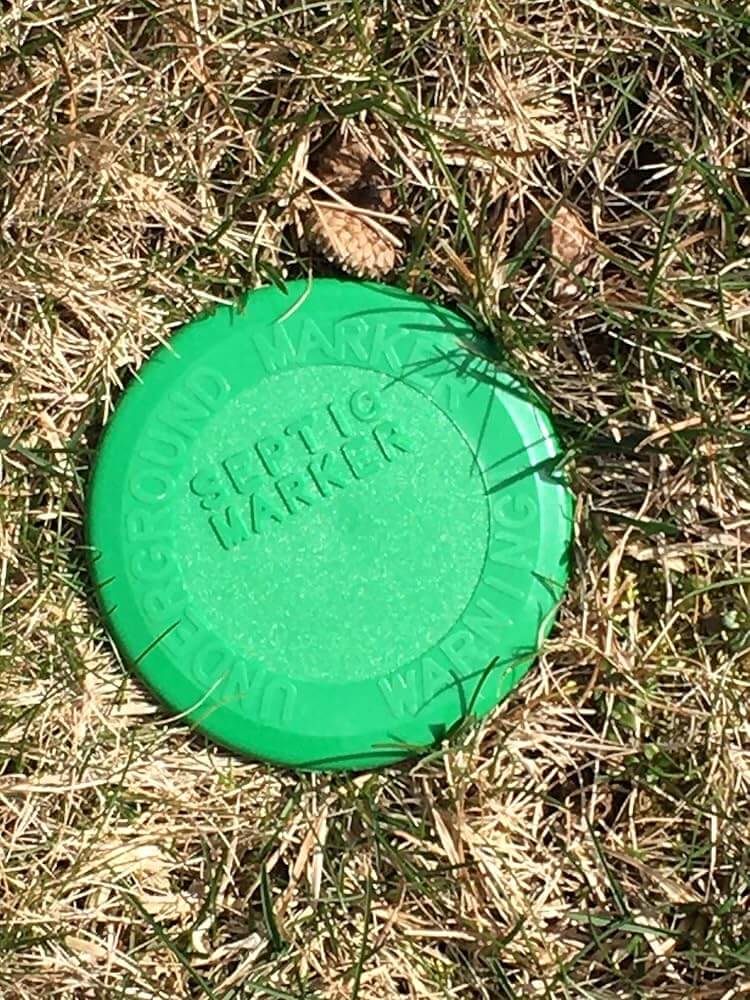
The first practical option is to use commercial plastic septic markers, which are readily available at local hardware stores or online retailers like Amazon. These markers are specifically designed to provide a long-lasting, low-maintenance solution for identifying septic tank access points or underground utilities.
Made from heavy-duty plastic, they’re built to withstand the elements and can last for many years without fading or deteriorating. Installation is quick and easy—simply tap the marker into the ground with a hammer. Once in place, it blends naturally into the lawn and sits below mower blade height, so it won’t interfere with routine yard maintenance. This type of marker ensures that future inspections, service calls, or DIY work can be done efficiently without guessing or digging around.
2. Metal Garden Stake Marker
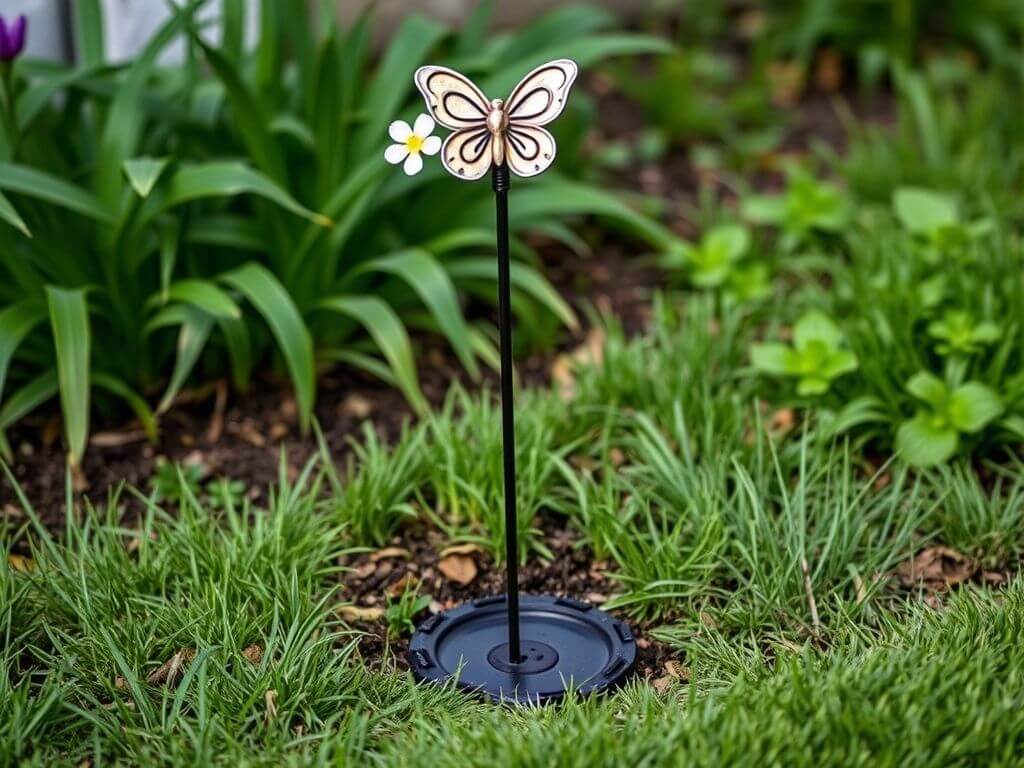
A slim metal stake with a decorative top (like a butterfly, flower, or solar light) pushed into the ground near or directly over the tank. Easy to remove for maintenance and can be coordinated with garden décor.
3. Mini Garden Sculpture
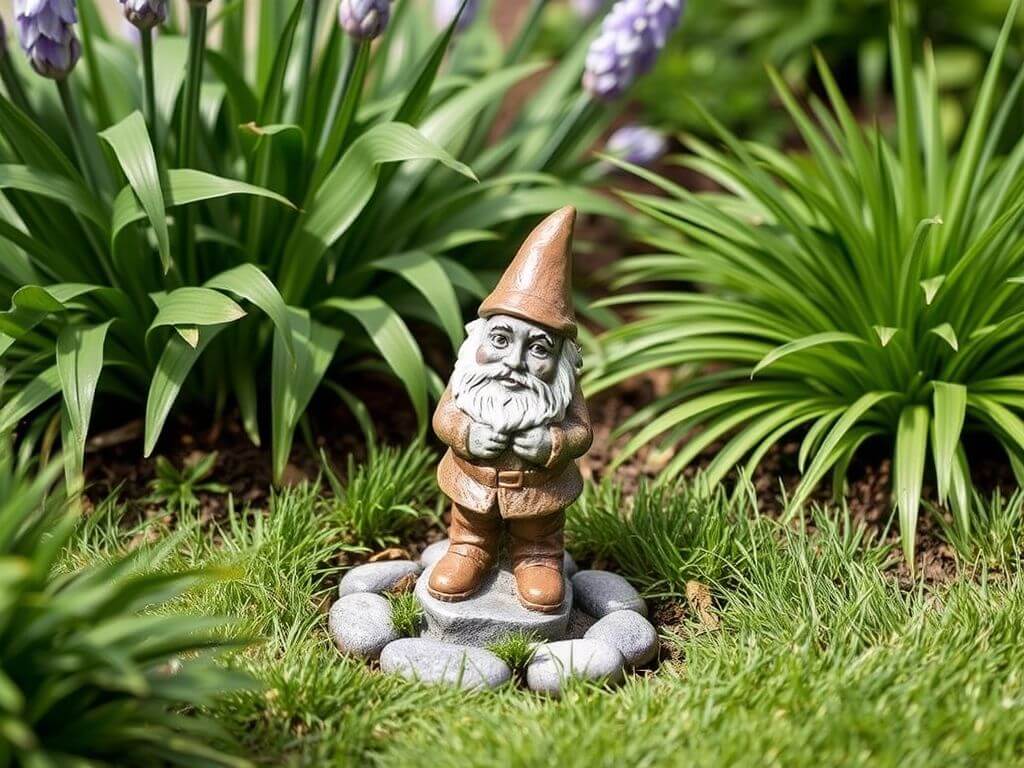
Use a small statue (like a gnome, turtle, or owl) as a marker. It adds whimsy or elegance to your yard while discreetly marking the septic location. Choose something weatherproof and easy to move.
4. Solar Light Marker
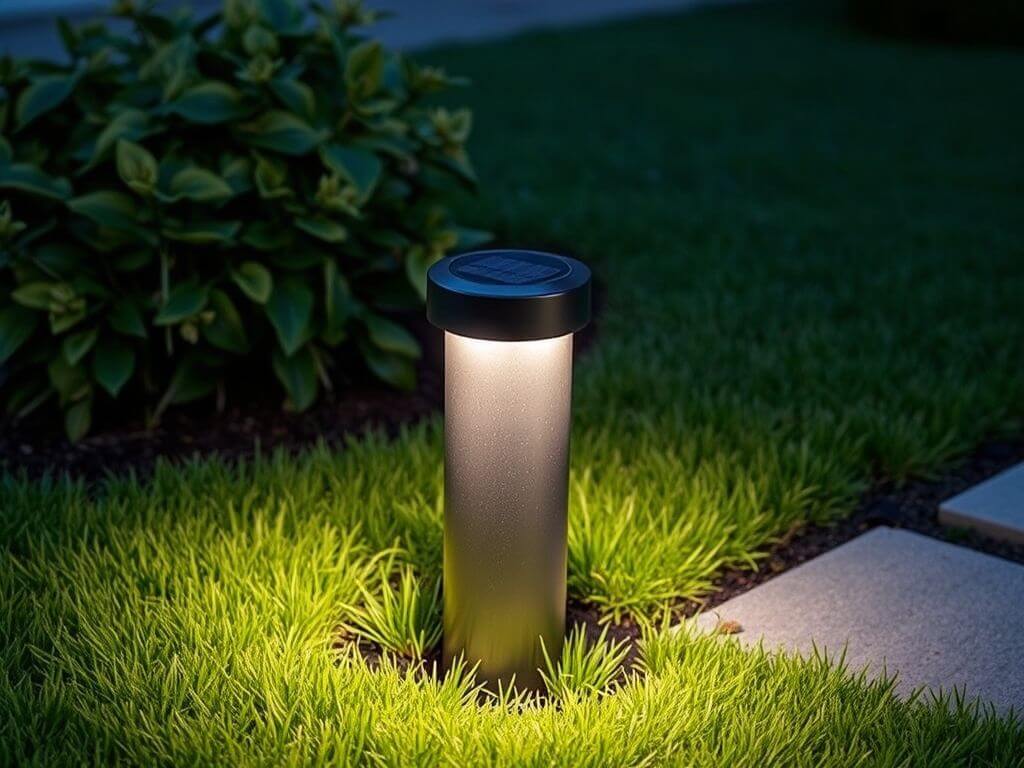
Install a low-profile solar light directly above the lid or to the side. It makes the spot visible at night and adds ambiance to the yard. Great for both function and appearance.
5. Engraved Plaque or Rock
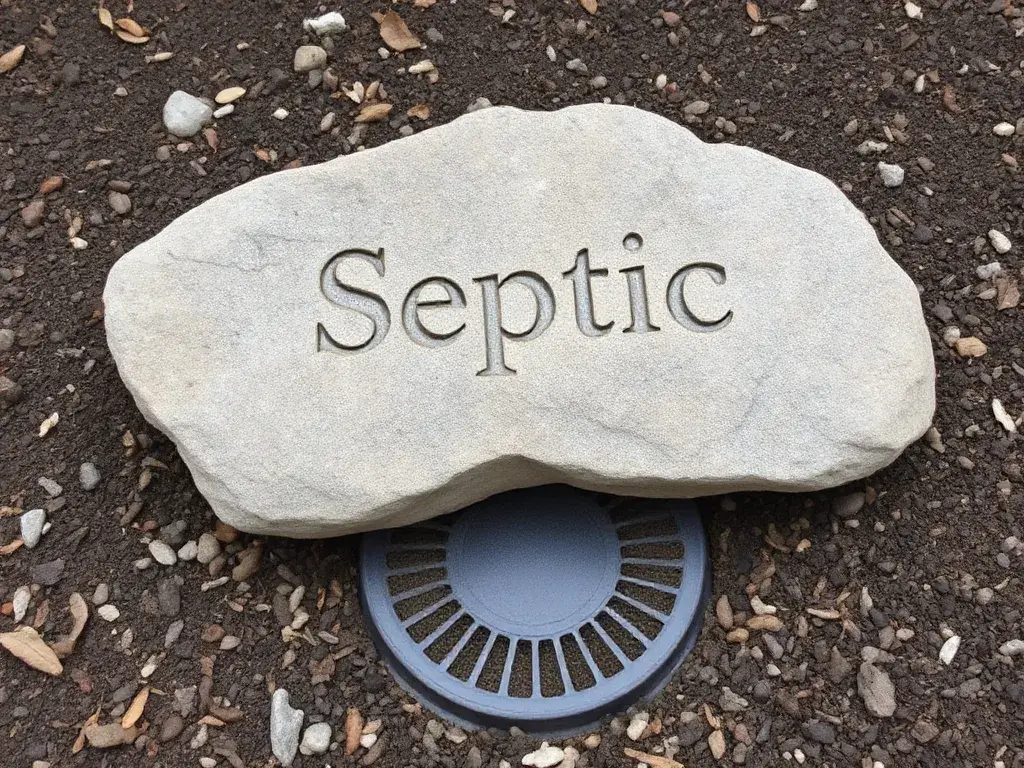
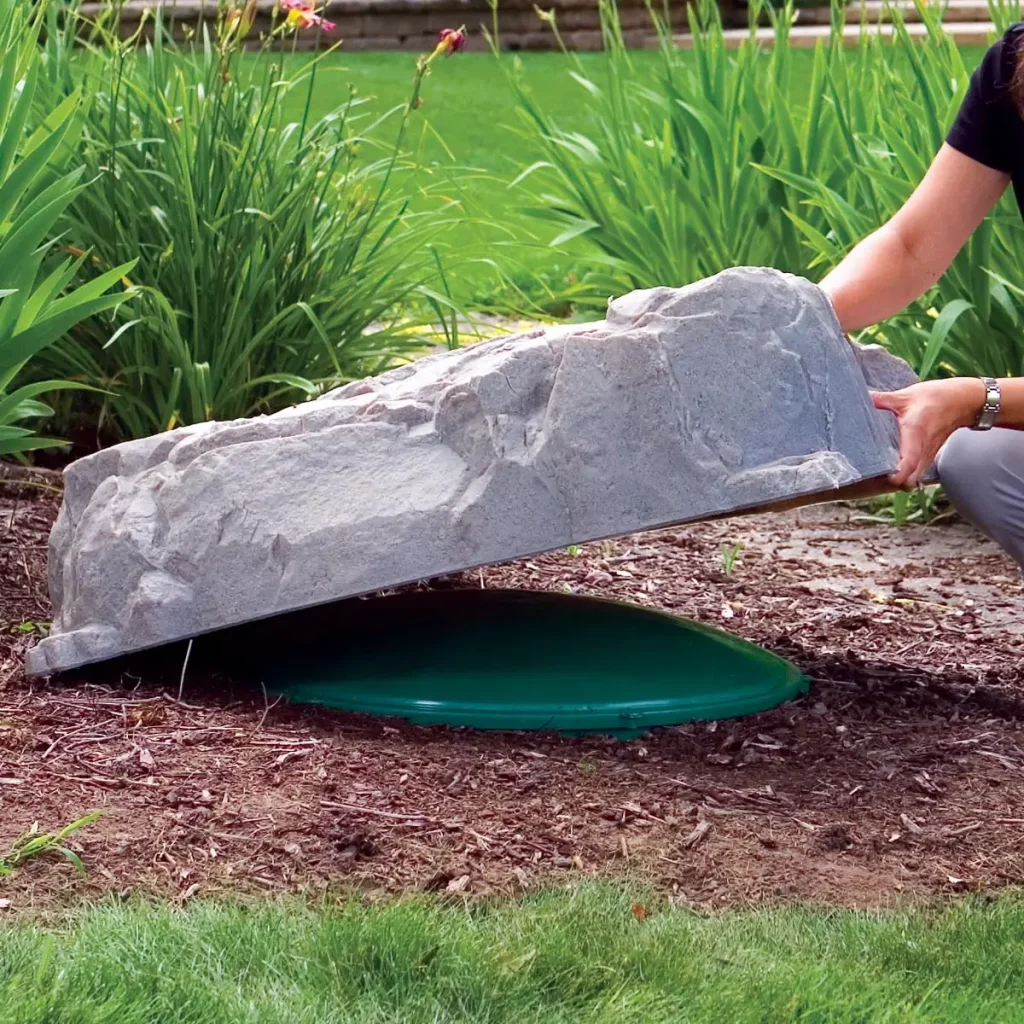
An engraved natural labeled “Septic” (or a similar term) can be placed directly above or near the lid to clearly mark the spot. This option provides a clear, permanent marker while blending in naturally with your landscape, making it easy for future homeowners or landscapers to locate.
Alternatively, consider using an plastic or artificial rock garden stone—a lightweight, durable faux rock cover designed specifically to conceal septic tank lids, vent pipes, or junction boxes. Crafted from realistic-looking fiberglass, these covers seamlessly blend into your landscaping while remaining easy to remove for maintenance. Unlike heavy natural rocks, they won’t put strain on the septic system, and they typically include ground stakes to keep them securely in place.
6. Planter Pot or Urn
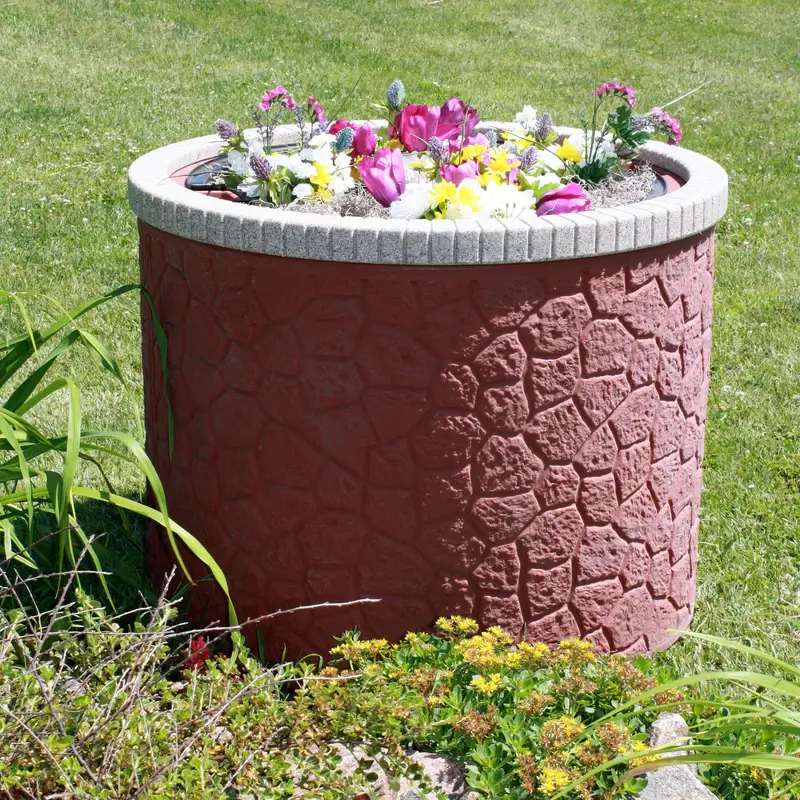
Source: Pinterest
A small planter filled with flowers or decorative grasses placed above or beside the lid. Lightweight planters make it easy to remove for maintenance, and they visually soften the area.
7. Customized Flag or Tag
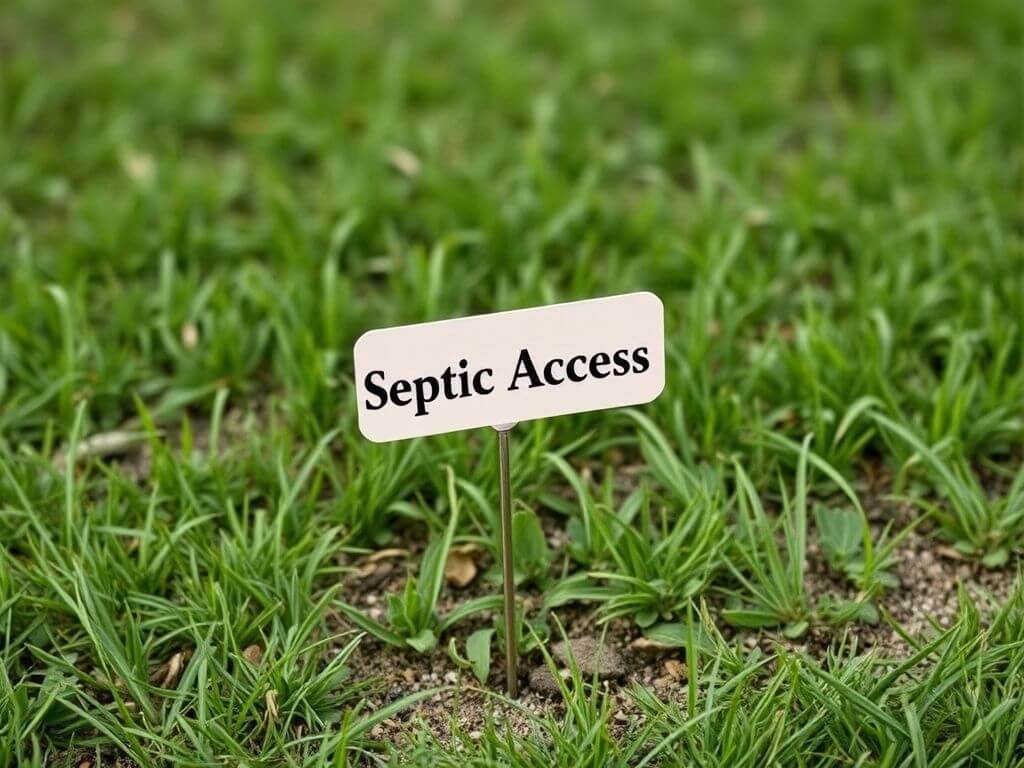
Attach a small, customized flag or stake tag with text like “Tank Access” or a color code. Especially helpful for maintenance crews and easy to reposition as needed.
8. Decorative Fence Panel
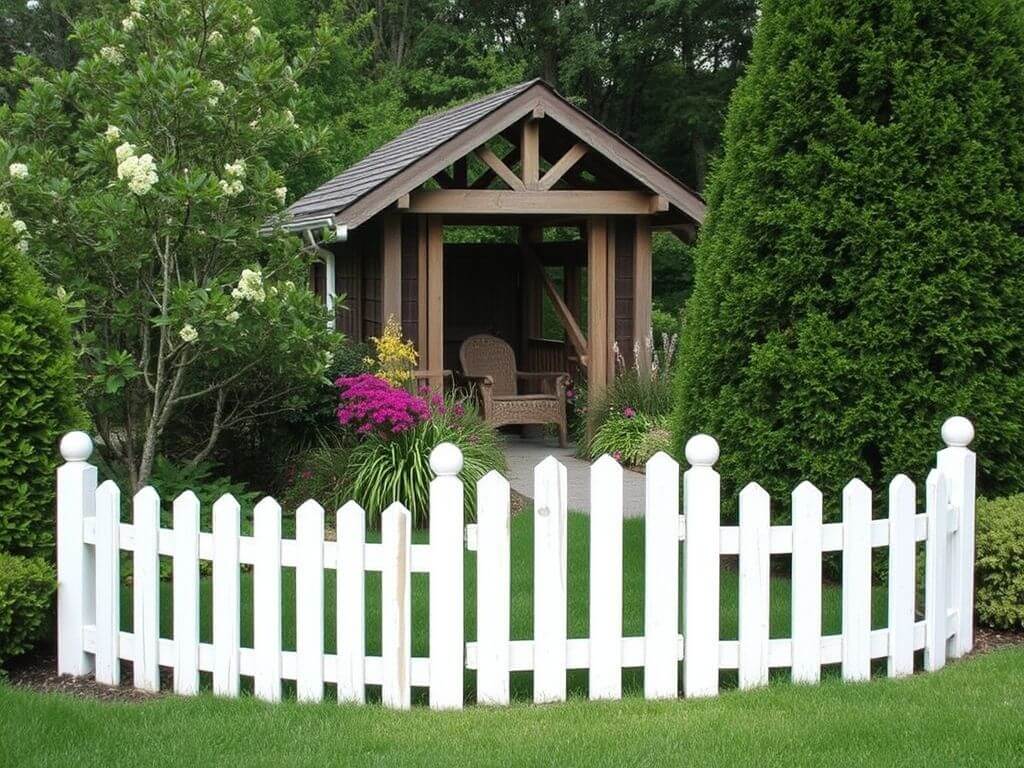
A small, standalone section of fencing (like a white picket or rustic wood) placed in front of the access area. It frames the spot visually without drawing too much attention and gives a tidy, intentional look.
9. Birdbath or Feeder
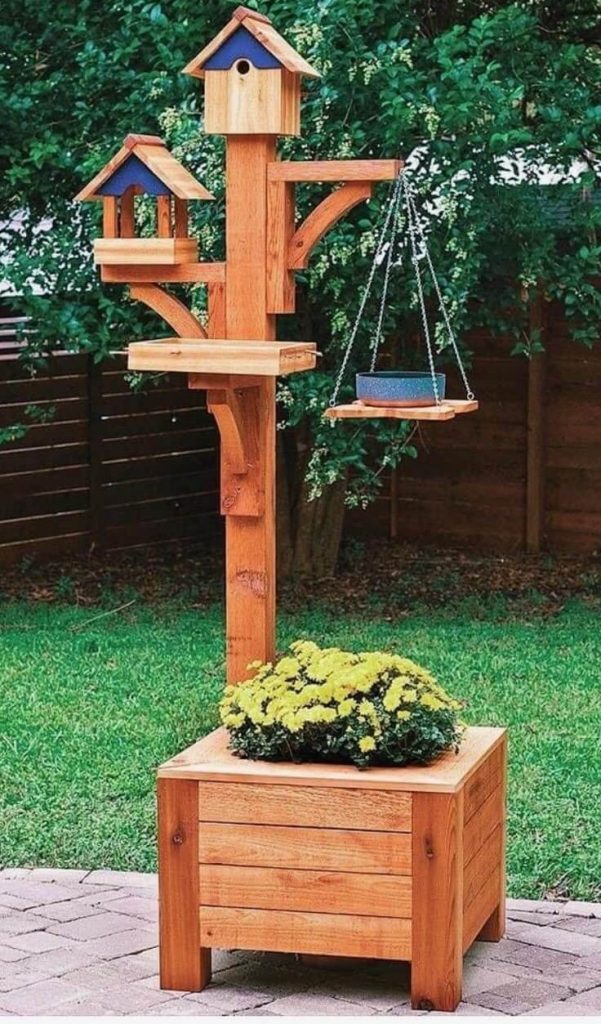
Source: Pinterest
A compact birdbath or bird feeder on a pedestal can serve double duty—as a septic marker and a wildlife attractor. Just make sure it’s lightweight enough to be removed when needed.
10. Concrete Paver with Embedded Marker
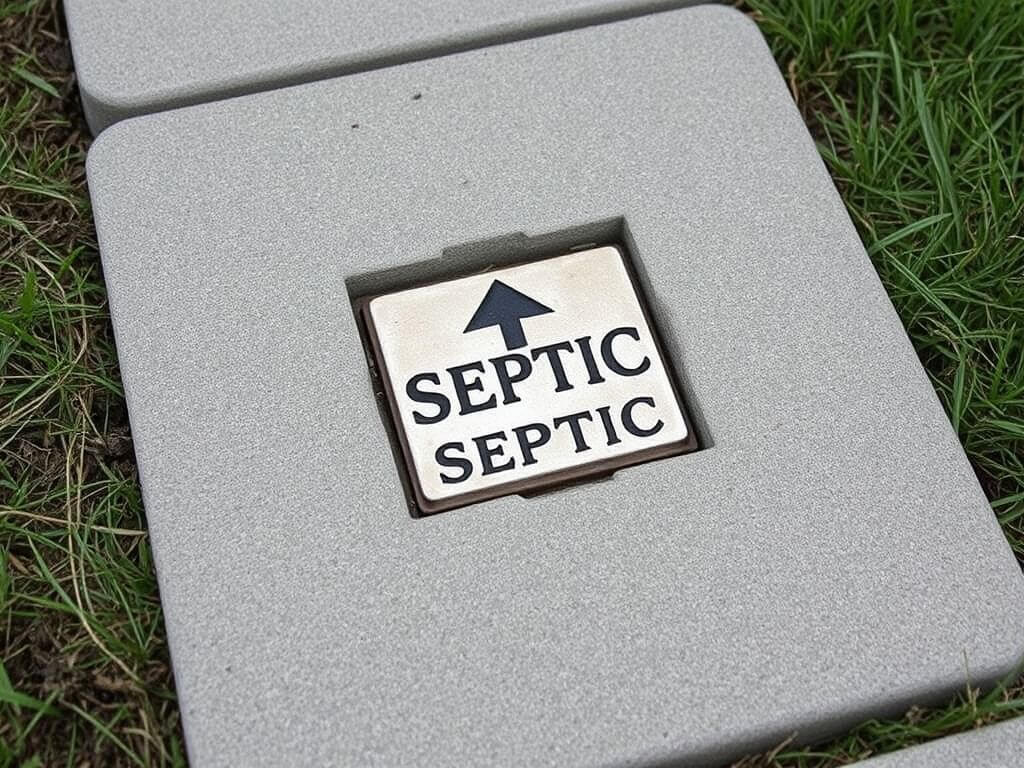
Use a concrete paver with a small, embedded metal or tile marker (like a septic symbol or label). Durable and clean-looking, it blends into patios or open lawn space while clearly indicating the spot.
11. Sundial Marker
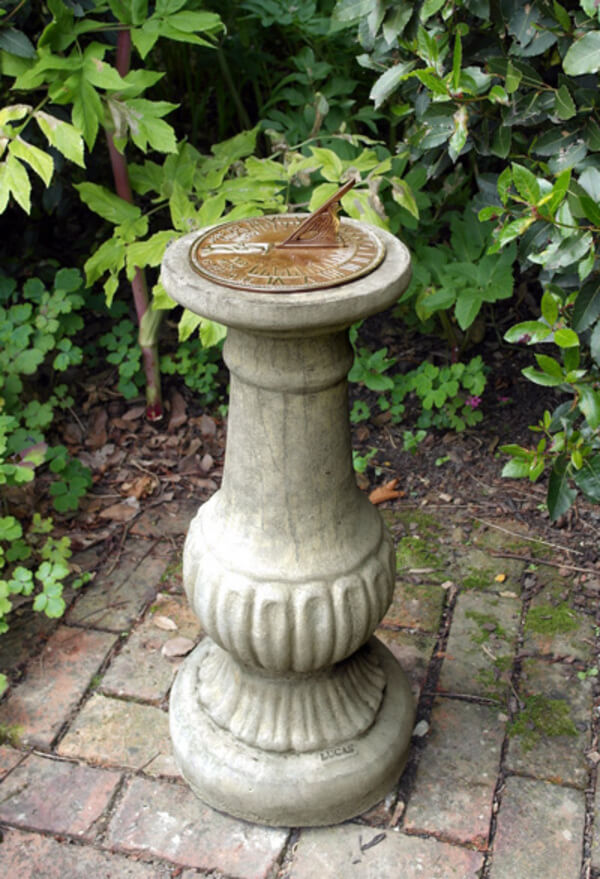
Place a decorative sundial directly over or beside the septic lid. It serves as a functional garden ornament while marking the location subtly. Choose a lightweight model that’s easy to move for access.
12. Camouflaged Utility Box
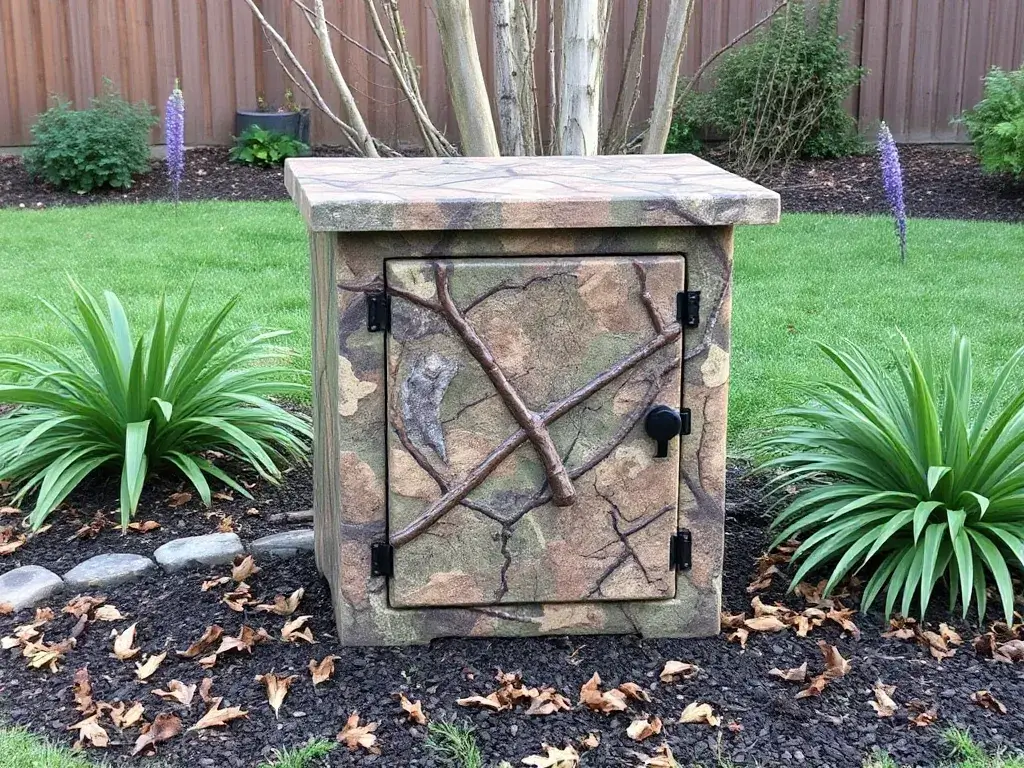
Use a faux utility box made from resin or plastic to cover or sit near the lid. Designed to mimic irrigation or cable boxes, it blends into yards naturally and draws no suspicion while being easy to remove.
13. Weather-Resistant Outdoor Art Panel
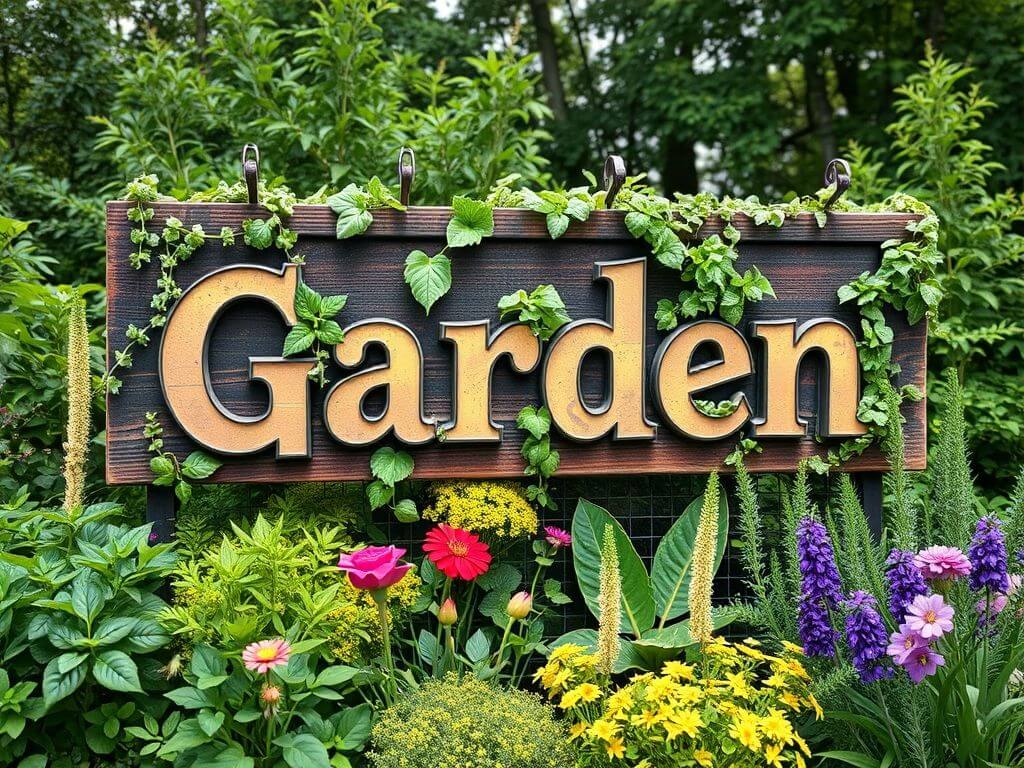
Install a vertical garden sign or art piece (e.g., a painted metal panel or mosaic) behind the septic location as a backdrop. It draws the eye upward and away from the ground while indicating a point of interest.
14. Low Groundcover Mosaic
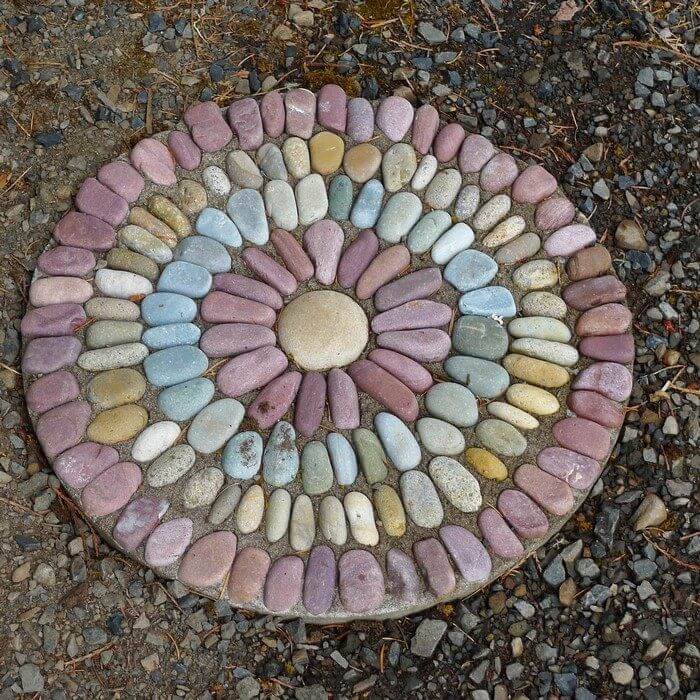
Source: Pinterest
Design a small circular or square patch of ground using contrasting gravel, mulch, or small pavers arranged in a mosaic or pattern. It subtly frames the lid area and signals its location without disrupting the landscape.
15. Miniature Outhouse Structure
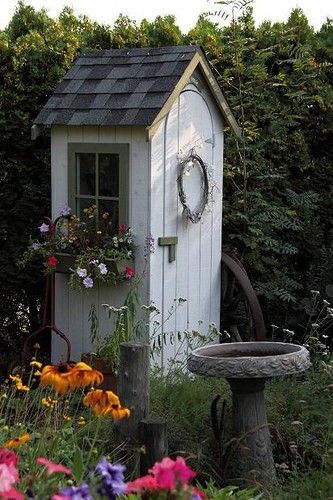
Construct a small, decorative outhouse replica using materials like wood or recycled pallets. This whimsical addition can sit atop the septic tank area, serving as both a humorous nod to its purpose and a clear marker. Ensure it’s lightweight and easily movable for maintenance access.
16. Dry Pond or Zen Garden Feature
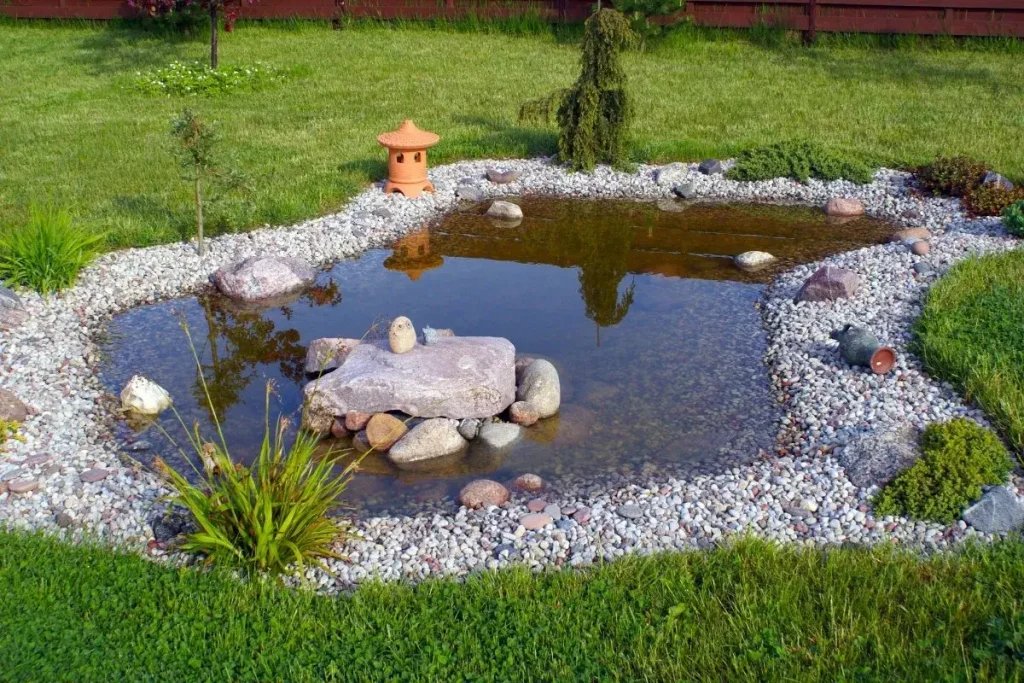
Source: Grover landscapes
Design a shallow, dry pond or Zen garden over the septic tank area using landscape fabric, pea gravel, and ornamental stones. This creates a serene focal point in your yard while subtly marking the tank’s location. It’s essential to keep the design lightweight and avoid deep digging to prevent any damage to the septic system.